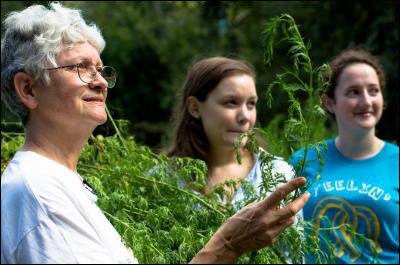Researchers explore plant remedy for malaria
Click Here to Manage Email Alerts
The NIH has awarded a 3-year, $420,000 grant to a research team at Worcester Polytechnic Institute in Massachusetts to test a plant-based therapy for malaria that has been in use for thousands of years, according to the university.
“Malaria remains a major global health crisis and the increasing drug resistance is alarming,” Pamela Weathers, PhD, professor of biology and biotechnology, said in a press release. “Our ultimate goal is to make an easy-to-produce therapy available to the people who need it.”
For the next 3 years, Weathers and colleagues will test the therapeutic activity of the sweet wormwood plant, Artemisia annua. The plant produces the compound artemisinin, the main component of the first-line treatment recommended by WHO for infection with Plasmodium falciparum malaria — artemisinin combination therapy (ACT). Typically, the compound is extracted, purified and combined with other agents, but the research team intends to study the effects of the dried whole leaves of the plant.
In animal studies conducted by Weathers and colleagues, whole-plant therapy was five times more effective in clearing the parasite causing the infection compared with pure artemisinin.

Figure 1. Pamela Weathers, PhD, professor of biology and biotechnology at Worcester Polytechnic Institute, left, and students harvest the sweet wormwood plant for use in their research aimed at developing an effective, low-cost whole-plant therapy for malaria.
Source: Worcester Polytechnic Institute
For the NIH-sponsored study, the researchers will use a laboratory model of the human digestive system to identify which compounds in the leaves move through the intestinal wall, including flavonoids and terpenes — both of which have exhibited antimalarial effects. The researchers will use cell cultures to evaluate how these compounds move through intestinal wall cells and whether they affect the movement of artemisinin across the cell layer and into the bloodstream where it can attack the parasite.
“Because these other compounds in the plant have some therapeutic activity, using the whole plant becomes an effective plant-based combination therapy,” Weathers said in the release. “Through this study, we hope to develop a better understanding of what compounds in the plant may be involved in making artemisinin more bioavailable.”
Weathers is also working with other groups in Africa to develop a new economic model for using whole-plant therapy to treat malaria infection. This includes local farmers growing crops of potent cultivars of Artemisia annua and processing the leaves into powder to be administered in capsules or tablets to local populations affected by the disease.
“The beauty of all this is that the plant is easy to grow in most areas and the production process is relatively simple,” she said. “It could be an important boost for local economies and for the heath of local populations.”
